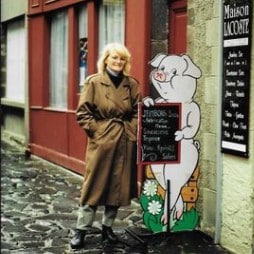
Home » The Bubble: The Early History of Dog Shows

The dog show community is made up of people of all ages and experience levels. We have people who have been supporting the sport in one way or another for decades: breeders, exhibitors, professional handlers, and judges. We also have newcomers, enthusiasts who own their first show dog. I thought it would be interesting this month to explore the history of dog shows, when, where, and how it all started.
Humans have been a competitive species going back for millennia, and competitive events involving dogs and horses go back centuries. Dog shows as we know them date back to the mid-19th century, but earlier events did take place. According to Frank Jackson, editor of Faithful Friends, Dogs in Life and Literature, the Holy Roman Emperor Rudolf II organized field trials in 1603, in which 450 dogs competed. Jackson also noted that there was a dog show in Brussels in 1690. This could be the event that some leather makers created. A guild of leather makers held a competition where all the competitors were dogs wearing leather collars made by their members. This was referred to in 19th-century magazines. He also referred to a dog show held in Prague in 1791, but I haven’t been able to find any further details on this.
Modern dog show history begins in Newcastle, England, in 1859. It was billed as The Sporting Dog Show, limited to pointers and setters with an entry of 60 dogs. The event was sponsored by two gunmakers who offered a pair of custom-made double-barrel shotguns as prizes! One of the principal promoters was John Henry Walsh, editor of The Field magazine and a founding member of The Kennel Club of Great Britain. Interestingly, the show was not held in the field but at the Town Hall of Newcastle, and the dogs were evaluated on their looks and not their ability in the field.
Later that same year, another show was held in Birmingham, and breeds other than pointers and setters were also judged. In 1860, the newly formed Birmingham Dog Show Society held another show, in which 30 different breeds were judged, followed by a week-long dog show in 1863 in London which attracted over 100,000 visitors, including members of the royal family.
Dog shows became very popular and rapidly spread to other countries. The first country was Belgium, in May 1847, and it was at this show where breeders first had the idea of creating a pedigree database for show dogs. This led to the creation of the FCI (Fédération Cynologique Internationale) some years later.
The Kennel Club in Great Britain, now called the Royal Kennel Club, was established in 1873, and the interest in dog shows had already spread across the Atlantic to the United States. The Westminster Kennel Club held its first show there in 1887. The American Kennel Club (AKC) was formed in 1884.
In the 19th century, shows for gun dogs and foxhounds became popular, organized by the landed gentry with kennel staff and stablehands caring for the dogs and even handling them at shows. Most of the owners and breeders at that point were the owners of large estates where hunting and shooting were both for practical purposes and provided social activities for visitors.
The early shows were very beneficial to the owners of sporting dogs. The dogs entered being owned by hunters, and the judges being enthusiastic sportsmen, these shows were excellent opportunities for hunters to see a large number of dogs and share information with each other. They would look for dogs to buy and for breeding prospects, but the shows were primarily competitions, just like today.
Dog shows were also profitable. Yes, profitable! In 1903, William Drury wrote in “British Dogs” that dog shows were a far more effective way to make money than field trials. They could be held at any time of the year, indoors or out, and drew far bigger crowds of spectators along with the dogs and handlers. They were also the forerunners of the county fair.
The big winners could charge more for their puppies and stud fees. Along with bragging rights, this was one of the purposes for competing at dog shows. There has been a misinterpretation of this in the past 25 years, and I have seen it too often when used in a negative manner. “Dog shows are for the evaluation of breeding stock” has been given as the sole reason for dog shows when
criticizing the state of a breed and of judging. Unfortunately, this discourages people from showing if they are not intending to breed. The “original” purpose of dog shows was as a competition, for wins, to earn bragging rights, and for social engagement. In my opinion, there was nothing wrong with that. We need more exhibitors, but they do not all have to be breeders.
In the Victorian era, lap dogs became fashionable with women, and the ladies soon became interested in showing their companions. The earliest of these shows was the Fancy Pet Show, held in a London pub in 1851. Breeds entered included various spaniels, an Italian Greyhound, and Skye Terriers.
The first country in history to actually organize a dog show was Belgium. This was in May 1847, in the town of Turin. Most of the exhibitors were hunters, and the idea arose to create a pedigree database for show dogs, which led to the creation of the FCI. The kennel clubs of France, the Netherlands, Austria, and Germany founded the FCI in 1911. The first CACIB (Certificats d’Aptitude au Championnat International de Beauté) show was held in Brussels in April 1912, followed by others in France and the Netherlands. Unfortunately, WWI prevented any further shows until the war ended. The FCI was revived in 1921, and the first two CACIB shows were held in Brussels on June 20, 1921 and in Paris in May 1922.
By this time, in both Britain and America, in spite of the Great Depression, dog shows became increasingly popular. Dogs were exported from Europe and the UK to the United States, creating founding populations for many breeds. WWII was devastating for those countries, but many top-quality dogs and bitches sailed to safety across the Atlantic and would otherwise have never left their home shores. Many of these or their offspring became top winners in the US and ensured the American breeders would be able to produce dogs that could compete anywhere in the world.
Twentieth-century history since the end of WWII has been well documented, and books and collectors’ items of magazines from the 20th century can still be found. I hope this brief recap of the early history of dog shows has been of interest.
